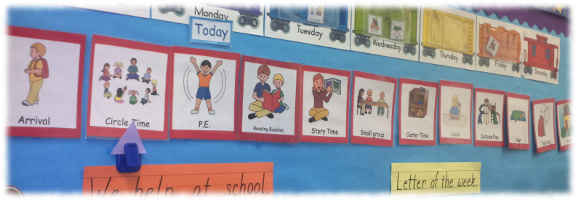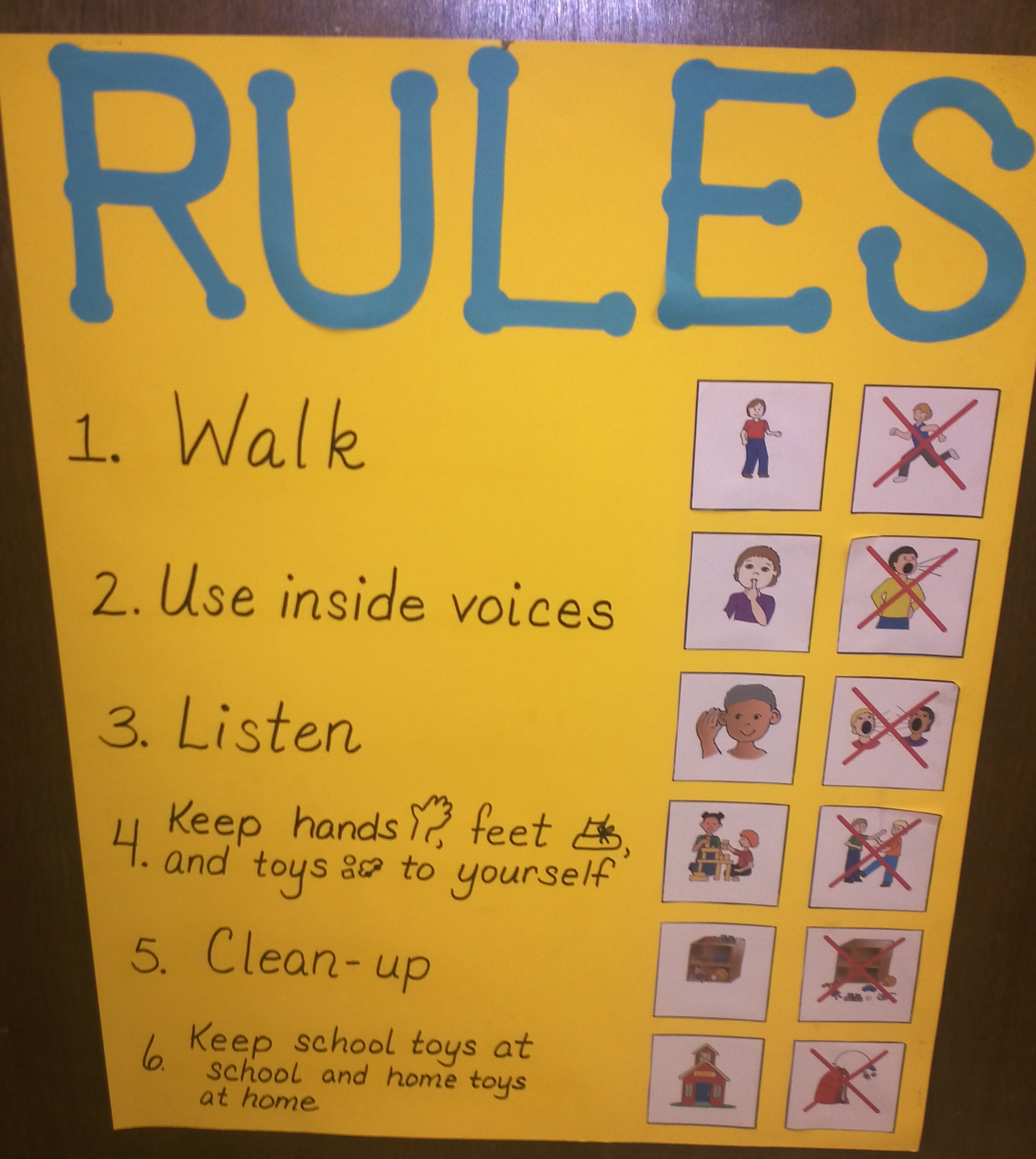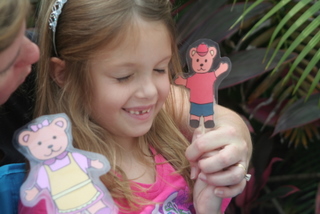
Step Ahead: Beginning the Year with Proactive Discipline
End of the day: are you worn, exhausted, and seeking an adult beverage? Every teacher has had rough days, but why do some seem to have it easier than others? Look at the most successful teachers, and you will see an infrastructure intentionally designed for proactive teaching.
Being an inclusion special education teacher, I am always looking for ways to stay ahead of any potential problems that may occur in the classroom. Meeting the needs of such diverse students sometimes forces me to think out of the box. I begin each year considering specific components to take proactive measures and stay a step ahead.
1. Physical Layout
First and foremost, the way you arrange your room will impact the learning that goes on. You can think of the classroom environment as an additional teacher.
In Reggio Emilia, a city in northern Italy where preschools are renowned for their quality of education, the two teachers in each classroom refer to the environment as the 'third teacher.'" (Taberski, p. 19).
Make sure your classroom has defined areas with clear expectations. A designated meeting or gathering area is the focal point of the classroom. Consider locations for both independent and collaborative work. Are there any "tracks" which allow for running? If I have any children in a wheelchair, there will need to be greater accessibility. Creating cozy areas that are designed for a learning purpose can define expectations and structure as well as provide a space to foster creativity and a place to think. However, too cozy can lead to too private, and may allow troublesome situation. Clutter can confuse and even stress some students with too much stimulation and undefined expectations. Materials should be labeled, organized, and easy to access. For young children or children with special needs, label bins with pictures of the items and words. This provides scaffolding and support for different developmental levels.
2. Schedule:
 The flow of the day can help set the tone of the classroom. One primary thing to consider is the activity pattern of the schedule. Considering the age and maturity of the students, look at how much time is allocated to active and passive activities. 60 minutes is far too long for young children to remain on passive activities, so consider breaking the time with educational music, yoga stretches, or heavy work like stacking chairs or moving books. Too much activity can exhaust or rev students up causing them to have difficulty calming and attending. Also display the schedule for the students to see and follow throughout the day. This will help students predict their learning environment and understand expectations for the day. LessonPix.com provides great picture cards for making class picture schedules and flip schedules for smaller individual schedules.
The flow of the day can help set the tone of the classroom. One primary thing to consider is the activity pattern of the schedule. Considering the age and maturity of the students, look at how much time is allocated to active and passive activities. 60 minutes is far too long for young children to remain on passive activities, so consider breaking the time with educational music, yoga stretches, or heavy work like stacking chairs or moving books. Too much activity can exhaust or rev students up causing them to have difficulty calming and attending. Also display the schedule for the students to see and follow throughout the day. This will help students predict their learning environment and understand expectations for the day. LessonPix.com provides great picture cards for making class picture schedules and flip schedules for smaller individual schedules.

3. Sensory:
 Sensory issues can present in many ways with aversion or compulsion. And young children may not understand or be able to express why they are feeling anxiety. For example, fluorescent lighting can be a stresser, and you may consider reducing the lighting by only turning on half of the lights. Beginning the day with exercises, music or heavy work can help students get the wiggles out and regulate their body to be ready to learn. Bulletin Boards that are made of bright yellow paper with bright red trim and covering every wall may be over-stimulating, and bare walls may be under-stimulating or cause the room to echo. I have a box of fidget toys for certain students to hold during full group lessons. This lets their hands stay busy so that their brains can attend. For more ideas on how to create a sensory classroom, talk with your school's occupational therapist.
Sensory issues can present in many ways with aversion or compulsion. And young children may not understand or be able to express why they are feeling anxiety. For example, fluorescent lighting can be a stresser, and you may consider reducing the lighting by only turning on half of the lights. Beginning the day with exercises, music or heavy work can help students get the wiggles out and regulate their body to be ready to learn. Bulletin Boards that are made of bright yellow paper with bright red trim and covering every wall may be over-stimulating, and bare walls may be under-stimulating or cause the room to echo. I have a box of fidget toys for certain students to hold during full group lessons. This lets their hands stay busy so that their brains can attend. For more ideas on how to create a sensory classroom, talk with your school's occupational therapist.
4. Building Trust:

Create a positive and friendly environment. Ignore the old saying, "Don't smile until Christmas". Invest in the time to conference with individual students, complement, smile, eat lunch with, play a board game during centers, and/or share something tangible (sticker, treat, etc). Do these things not based on behavior, but just to show you care about them as a person. An important way to build trust with students is to be consistent. Let your students know that from when they walk in to when they leave, they are in a structured loving classroom with clear expectations and people who care.
5. Community Building:
A colleague of mine shared a community building activity. She had all of her kindergarten students gather about a table (about 3 ft by 5ft). Then picked a extroverted student to come lift the table off of the ground using only 2 fingers. Then she
 called a strong boy to come help using only 2 fingers also. The table might move a little, but not much. Then the whole class gathered around the table and all used two fingers. The table went up with ease. She explained that when we work together, we can accomplish great things.
called a strong boy to come help using only 2 fingers also. The table might move a little, but not much. Then the whole class gathered around the table and all used two fingers. The table went up with ease. She explained that when we work together, we can accomplish great things.
There are a million of community building themes and ideas, often based on literature. For example The Crayon Box That Talked, by Shane Derolf and Michael Letzig, teaches that if we are all the same we would be a boring as a box with nothing but blue crayons. But with each of our unique talents and traits, we are like a colorful box of crayons with the ability to create a colorful masterpiece.
6. Rules:

Creating the classroom rules is an important beginning of the year ritual that set the limits and expectations for everyone in the class. This should be started on day 2. Day 1 should focus on who is in our class, what materials they will need, team building activities, and what they should expect during the year. The rules should be a short list with clear, age-appropriate rules. Time needs to be invested in giving examples and non-examples, role playing, reading stories related to the rules, and explaining vocabulary such as "inside voices", "respect", and "share". Consequences for misbehaviors should be explained. If there is a behavior management system in place, this should be clearly tied to the rules and consequences.
7. Safe Place

“Reactive people are often affected by their physical environment. If the weather is good, they feel good. If it isn’t, it affects their attitude and performance. Proactive people carry their own weather with them.” - Steven Covey
8. Communication
 Communication is an extremely important part of designing a safe and proactive discipline plan. I must consider how I communicate to the students, the parents, my colleagues, teacher assistants, and other adults in the room. With the students, I model an inside voice with clear language, empathy, unconditional care, and assertive tone as needed. With parents, I use a daily take-home binder with daily notes, however this is time-consuming and may not be possible in some classrooms. E-mail, weekly newsletters, occasional and random positive notes, and discipline note as needed are all ways to communicate what is happening in the classroom. The more I have involved parents and communicated early, the more invested the parents are, and therefore more willing they are to help. With colleagues, adults, and assistants, we plan to meet weekly to discuss individual concerns and overall curriculum. I use a clipboard in various centers with specific targeted students and activities to address individual needs. No matter how you communicate, it is important that you communicate.
Communication is an extremely important part of designing a safe and proactive discipline plan. I must consider how I communicate to the students, the parents, my colleagues, teacher assistants, and other adults in the room. With the students, I model an inside voice with clear language, empathy, unconditional care, and assertive tone as needed. With parents, I use a daily take-home binder with daily notes, however this is time-consuming and may not be possible in some classrooms. E-mail, weekly newsletters, occasional and random positive notes, and discipline note as needed are all ways to communicate what is happening in the classroom. The more I have involved parents and communicated early, the more invested the parents are, and therefore more willing they are to help. With colleagues, adults, and assistants, we plan to meet weekly to discuss individual concerns and overall curriculum. I use a clipboard in various centers with specific targeted students and activities to address individual needs. No matter how you communicate, it is important that you communicate.
9. Have an Extra
There will always be the child or children who do not have the required materials. Have an extra. If you expect the parents to buy it- you should have one also. When the time comes to have the material (ie: notebook, blanket for rest, box of ziplock bags), you can discreetly give the child who is missing the material, relieve their anxiety, and possibly avoid behavior problems (withdrawn, escape behaviors, etc). Chances are it is not the child's fault that they do not have the proper material.
In Conclusion: Be the Conductor
As a conductor in a symphony, keep your head up, pace the class, and balance the diverse instruments. If there is no lead, there will be noise. Don't let the percussion instruments overwhelm, but give them a chance to showcase their gifts. Pace the symphony with fast and slow, loud and soft. Let individuals solo and sections shine. And in the end, you can create a exquisite production and touch everyone's heart and talents.
#gen ed, #general education, #early childhood, #general ed, #kindergarten, #first grade, #special education, #special ed, #school, #social skills, #behavior strategies
 Facebook
Facebook Twitter
Twitter Pinterest
Pinterest